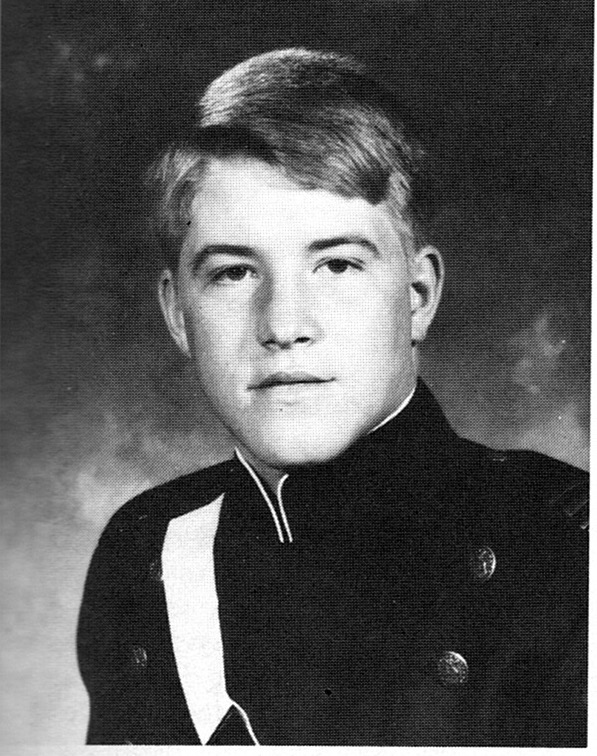
Two weeks ago, I blogged about a friend, Paul J. Weaver, that I lost to death while serving his country in the First Gulf War. Today I commemorate Steve Phillis who gave the ultimate sacrifice, on this day 30 years ago.
The Training NCO

I first met Stephen, “Steve” Richard Phillis in August of 1980. My Basic Cadet Squadron mates were moving from Executioners (located in CS 14 Hyper Vipers portion of Vanderburgh Hall) to Cadet Squadron 28, The Blackbirds AKA The Mellow Magpies.
I knew and addressed him at Cadet Second Class Stephen R. Phillis. To be honest, I did not like him at first. About half way through the semester the Training Sergeant (now known as the Training NCO) was put on Academic Probation and Cadet Phillis was tapped to replace him. He was now Cadet Technical Sergeant Stephen R. Phillis. My dislike for him grew. Most fourthclassmen, AKA doolies, at the Air Force Academy do not like their Training Sergeant. The Training Sergeant is chiefly responsible for the hands on, day to day, training of the doolies. This includes a lot of push-ups, yelling and reciting of knowledge. Phillis, in particular was tough and unrelenting. He was a stickler for details and would not cut anyone a break. I was glad when “his reign” ended at Christmas Break.
He was still tough after Christmas Break until we were recognized in late March of 1981. He wasn’t super friendly after that, he basically ignored us, but he was civil.
The Boxing Captain

Things changed my three degree (sophomore) year. I began to see how his toughness and wanting the fourthclassmen to earn their recognition was a good thing. I still disagreed with him on certain topics. Come to think of it, his roommate, Steve Marshman did as well. But they were civil disagreements.
Additionally, I saw how Steve poured into the boxers of CS-28. He was the intramural captain of the squadron boxing team. He developed untested cadets like Paul Suarez into boxers who could win a bout. So many wins, in fact, that CS-28 captured the Wing Intramural Boxing Championship. However, Steve’s focus was mainly on graduation and pilot training that followed. Steve made it clear that he wanted to be a fighter pilot.
Steve graduated from the Academy in May of 1982. Before he left for pilot training, he was assigned casual status at the Academy after his 30 days of leave. It was July of 1982, in what turned out to be a really bad decision by the Academy, USAFA hosted some kind of young girl’s conference for a week. This resulted in a bunch of teeny bopper girls (ages 13-17 as I recall) running around the Academy. Talk about a recipe for disaster (and it was…USAFA never did it again). Steve was put in charge of a group of girls. Most of them had a hopeless crush on him, his blonde hair, blue eyes and athletic build. They were smitten.
The Fighter Pilot

Steve and I bumped into each other in Arnold Hall. As girls took turns coming up trying to get his attention and flirting, Steve and I talked about pilot training. He was to leave soon and I think one of the last things he said to me was, “I can’t wait to go fly fighters”.

That was the last I saw or heard from Steve Phillis until February of 1991. I was stationed at Fairchild AFB. The First Gulf War was going full bore and the air campaign was central. As I sat at the Officers/NCO Club over lunch a medical buddy of mine mentioned that he was informing a family in Spokane that their son had been shot down in an A-10 and was MIA. We talked about how tough it was to deliver that news. It wasn’t the only A-10 to go down that month.

On February 15, 1991 over Northwest Iraq, Steve Phillis was the lead aircraft along with his wingman, 1 Lt Rob Sweet. They identified and engaged an Iraqi truck convoy. While firing they were struck by ground fire. Sweet’s aircraft was disabled and he ejected. Steve Phillis was not going to leave his wingman. He radioed to request search and rescue (SAR) support so that his wingman could be rescued before being captured as a POW. He was strafing to keep the enemy from reaching his wingman. His A-10 was hit and Phillis is thought to have been knocked unconscious. He never attempted to eject before his aircraft crashed into the Iraqi soil.
Debriefs after the war with Iraqis revealed that the most psychologically devastating US airplane was the B-52 (the sound made them shudder). However, the most tactically effective US airplane was the A-10, Steve’s plane. They took out many tanks and other assets on the ground. Steve Phillis got his heart’s desire. He got to fly fighters. He flew them well. One of the first rule of fighters is “don’t leave your wingman”. Steve did not leave his wingman. In a bit of irony, his wingman survived captivity and returned to US soil. Steve, who sacrificed himself to protect his wingman, lost his life on Iraqi soil.

Steve is buried in Illinois: https://www.findagrave.com/memorial/151441581/stephen-r-phillis . There are several memorials to Steve around the country. The first is in his home town of Rock Island Illinois http://wvik.org/post/qc-pilot-honored-0#stream/0 . There is also a memorial near the former Myrtle Beach AFB (where Steve was stationed) https://www.hmdb.org/marker.asp?marker=113456. Finally, there is a very simple, but powerful memorial to Steve in the old pay phone booth in CS-28 where we met all those years ago. http://www.homeofheroes.com/myhero/Capt_Stephen_Phillis.html. On this 30 year anniversary, let’s remember Steve and the others who gave the ultimate sacrifice.


Captain Phillis was our Weapons Officer at Suwon Korea in 1987 and an American Hero—-
Yes indeed, thanks for sharing Tony